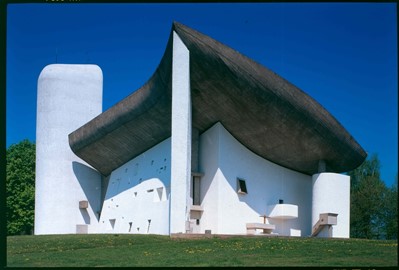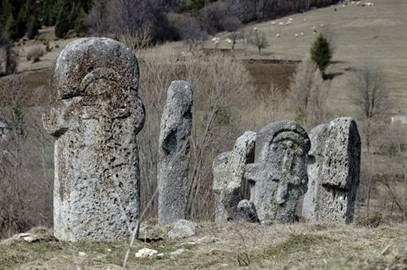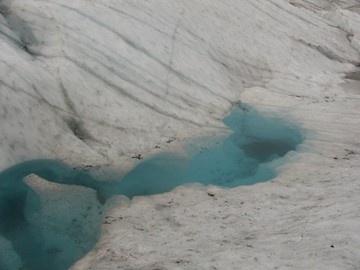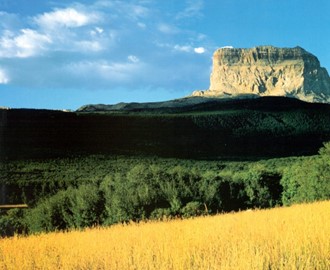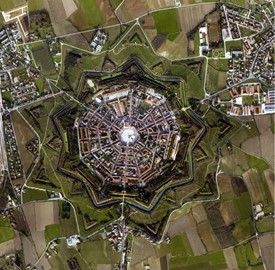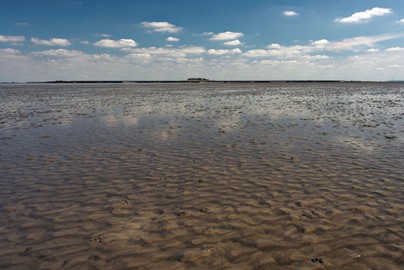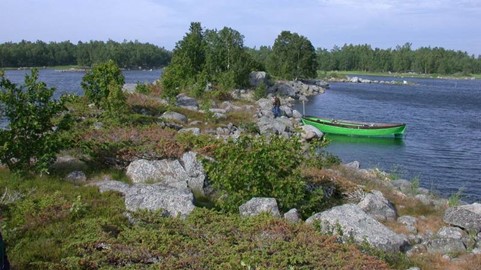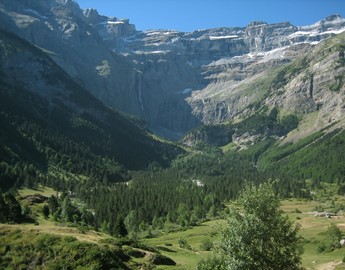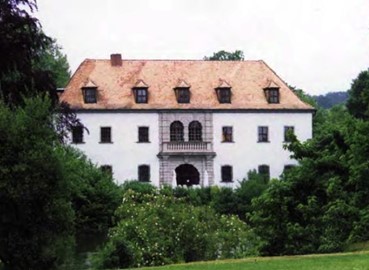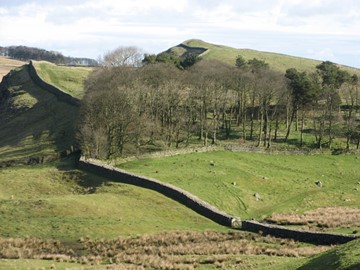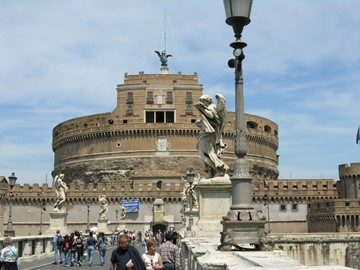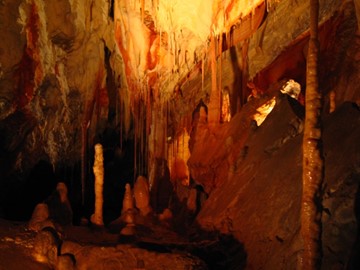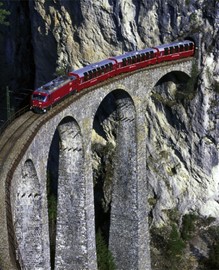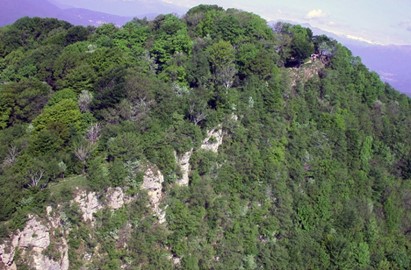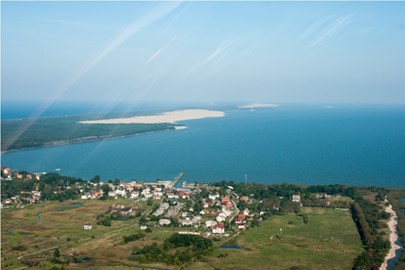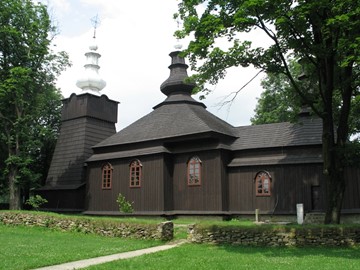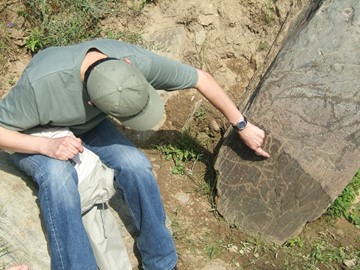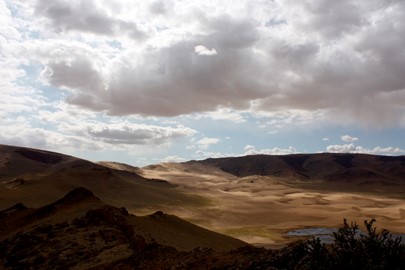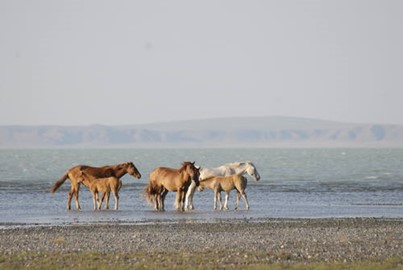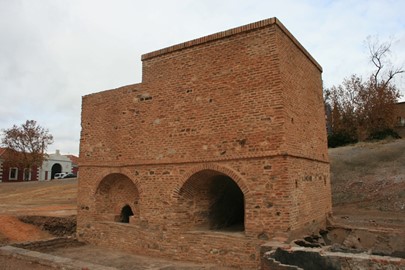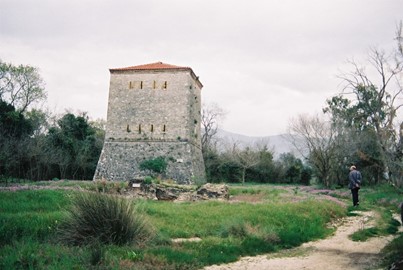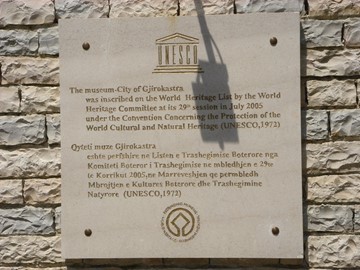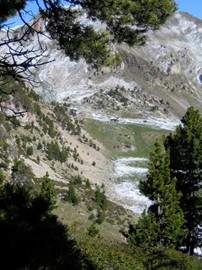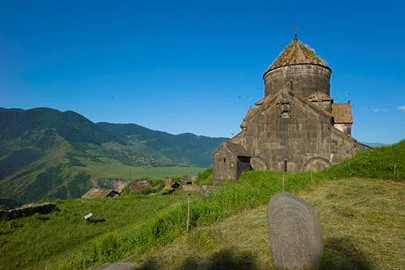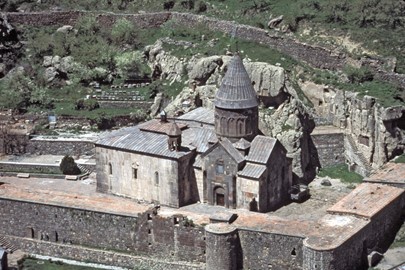region :: europe and north america
The Architectural Work of Le Corbusier
The Architectural Work of Le Corbusier, a UNESCO World Heritage site recognized in 2016, spans 17 modernist buildings across seven countries—Argentina, Belgium, France, Germany, India, Japan, and Switzerland—designed by the Swiss-French architect Le Corbusier from the 1920s to 1960s. Featuring iconic structures like the Villa Savoye and Chandigarh’s Capitol Complex, these works showcase his innovative use of concrete, open plans, and functional design, shaping 20th-century architecture. This global site ref... Read More
Stecci Graveyards
The Stecci Graveyards, a UNESCO World Heritage site in Bosnia and Herzegovina, Croatia, Serbia, and Montenegro, recognized in 2016, are 28 medieval cemeteries featuring over 70,000 ornate tombstones from the 12th to 16th centuries. These limestone stecci, adorned with carvings of crosses, figures, and inscriptions, reflect a unique Balkan Christian burial tradition blending local and external influences. This transnational site showcases the region’s cultural heritage, preserving a striking medieval art for... Read More
Glacier Bay, Kluane and Tatshenshini
Glacier Bay / Kluane / Tatshenshini, a UNESCO World Heritage site in Canada and the United States, recognized in 1979 with expansions in 1992 and 1994, is a vast wilderness of glaciers, mountains, and rivers across Alaska and Yukon. Featuring North America’s tallest peaks, like Mount Logan, and dynamic icefields, it harbors grizzly bears, Dall sheep, and rare glacial ecosystems. This transnational site reflects a stunning natural legacy, showcasing geological grandeur and biodiversity in a remote northern f... Read More
Waterton Glacier
Waterton Glacier International Peace Park, a UNESCO World Heritage site in Canada and the United States, recognized in 1995, is a cross-border park uniting Waterton Lakes in Alberta and Glacier National Park in Montana, established in 1932 as the world’s first international peace park. Its rugged Rockies landscape features glacier-carved lakes, prairies, and peaks, hosting grizzly bears and diverse flora. This transnational site reflects a shared natural heritage, symbolizing cooperation and ecological rich... Read More
Venetian Works of Defence
Venetian Works of Defence, a UNESCO World Heritage site in Croatia, Italy, and Montenegro, recognized in 2017, are 15 fortified sites built by the Venetian Republic from the 15th to 17th centuries to protect its maritime trade routes. Featuring star-shaped forts, city walls, and coastal bastions like those in Kotor and Zadar, they showcase advanced military architecture. This transnational site reflects Venice’s strategic legacy, blending engineering prowess with historical significance across the Adriatic ... Read More
Wadden Sea
The Wadden Sea, a UNESCO World Heritage site in Denmark, Germany, and the Netherlands, recognized in 2009 with expansions in 2011 and 2014, is Europe’s largest tidal flat system, stretching along the North Sea coast. Its dynamic mudflats, sandbanks, and salt marshes support millions of migratory birds and marine life, reflecting a globally unique coastal ecosystem. This transnational site showcases the region’s natural heritage, preserved through cooperative efforts, highlighting the interplay of tides and ... Read More
High Coast and Kvarken Archipelago
High Coast / Kvarken Archipelago, a UNESCO World Heritage site in Finland and Sweden, recognized in 2000 and extended in 2006, is a Baltic coastal region showcasing dramatic post-glacial rebound, with land rising since the Ice Age. The High Coast’s rugged cliffs contrast with Kvarken’s shallow archipelago of moraine islands, hosting unique ecosystems and geological formations. This transnational site reflects Scandinavia’s natural heritage, offering a vivid record of Earth’s geological evolution and adaptat... Read More
Mont Perdu
Mont Perdu, a UNESCO World Heritage site in France and Spain, recognized in 1997, is a stunning Pyrenees landscape centered on Monte Perdido, blending dramatic limestone peaks, deep canyons, and pastoral valleys. Straddling the border, it features glacial cirques and traditional agro-pastoral systems, reflecting centuries of human interaction with nature. This transnational site showcases the region’s geological and cultural heritage, preserving a rare harmony of rugged wilderness and historical livelihoods... Read More
Muskauer Park
Muskauer Park, a UNESCO World Heritage site in Germany and Poland, recognized in 2004, is a 19th-century landscape garden straddling the Neisse River, designed by Prince Hermann von Pückler-Muskau from 1815 to 1844. Blending English-style parkland with castles, bridges, and woodlands, it reflects Romantic ideals of nature and human harmony. This transnational site showcases the region’s cultural heritage, preserving a pioneering example of landscape architecture across borders.
Frontiers of the Roman Empire
The Frontiers of the Roman Empire, a UNESCO World Heritage site in Europe, recognized in phases from 1987 to 2021, spans sites in Germany, the UK, Austria, and Slovakia, tracing the Roman Empire’s northern boundaries from the 1st to 5th centuries CE. Featuring Hadrian’s Wall, the Antonine Wall, and the Upper German-Raetian Limes, these fortifications, forts, and settlements reflect Rome’s military engineering and cultural reach. This transnational site showcases Europe’s ancient heritage, preserving a vast ... Read More
Rome
The Historic Centre of Rome, the Properties of the Holy See in that City Enjoying Extraterritorial Rights and San Paolo Fuori le Mura, a UNESCO World Heritage site in Italy, recognized in 1980 and extended in 1990, encompasses Rome’s ancient core and key Vatican properties. Featuring iconic landmarks like the Colosseum, Roman Forum, and St. Peter’s Basilica, it reflects over 2,800 years of urban, architectural, and religious history. This site showcases Italy’s unparalleled cultural heritage, blending Roman... Read More
Aggtelek and Slovak Karst
Aggtelek and Slovak Karst, a UNESCO World Heritage site in Hungary and Slovakia, recognized in 1995 with an extension in 2000, is a vast karst region featuring over 1,000 caves, sinkholes, and limestone formations shaped over millions of years. Home to stunning systems like Baradla-Domica, it boasts unique stalactites and rare subterranean ecosystems. This transnational site reflects Central Europe’s geological heritage, showcasing a natural wonder of underground beauty and scientific significance across bo... Read More
Rhaetian Railway
The Rhaetian Railway, a UNESCO World Heritage site in Italy and Switzerland, recognized in 2008, is a scenic rail network featuring the Albula and Bernina lines, completed in 1910, winding through the Alps. With stunning viaducts, tunnels, and spiral loops like the Landwasser Viaduct, it showcases early 20th-century engineering amid breathtaking mountain landscapes. This transnational site reflects a harmonious blend of technology and nature, highlighting the region’s cultural and industrial heritage.
Monte San Giorgio
Monte San Giorgio, a UNESCO World Heritage site in Italy and Switzerland, recognized in 2003 and extended in 2010, is a pyramid-shaped mountain renowned for its Triassic fossil deposits, dating back 245-230 million years. Its well-preserved marine reptiles, fish, and plants, unearthed from ancient lagoon beds, offer a global benchmark for paleontology. This transnational site reflects the region’s geological heritage, showcasing a prehistoric underwater world frozen in time across borders.
Curonian Spit
The Curonian Spit, a UNESCO World Heritage site in Lithuania and Russia, recognized in 2000, is a narrow, 98-kilometer sand dune peninsula separating the Curonian Lagoon from the Baltic Sea. Shaped by wind and human efforts since the 19th century, its shifting dunes, forests, and fishing villages reflect a fragile balance of nature and culture. This transnational site showcases the region’s unique ecological and historical heritage, preserving a dynamic coastal landscape across borders.
Wooden Tserkvas
Wooden Tserkvas, a UNESCO World Heritage site in Poland and Ukraine, recognized in 2013, are 16 intricately crafted wooden churches built between the 16th and 19th centuries by Eastern Christian communities. Featuring steep roofs, bell towers, and ornate interiors, they blend Byzantine influences with local carpentry traditions in the Carpathian region. This transnational site reflects the region’s rich religious and architectural heritage, preserving a unique cultural legacy across borders.
Côa Valley and Siega Verde
Côa Valley and Siega Verde, a UNESCO World Heritage site in Portugal and Spain, recognized in 1998 and extended in 2010, are open-air rock art sites featuring thousands of Paleolithic engravings from 22,000 to 10,000 BCE. Etched into schist along river valleys, these carvings of horses, aurochs, and hunters reflect humanity’s earliest artistic expressions. This transnational site showcases Iberia’s prehistoric heritage, preserving a rare outdoor gallery of ancient life across borders.
Uvs Nuur Basin
Uvs Nuur Basin, a UNESCO World Heritage site in Russia, recognized in 2003, is a vast, remote depression in southern Siberia encompassing Mongolia’s largest lake and diverse ecosystems from deserts to tundra. Home to rare species like the snow leopard and hosting ancient burial mounds, it reflects a unique convergence of natural and cultural history. This transboundary site showcases Russia’s ecological and archaeological richness, preserving a pristine landscape shaped by extreme climates.
Landscapes of Dauria
Landscapes of Dauria, a UNESCO World Heritage site in Russia and Mongolia, recognized in 2017, is a vast steppe and wetland region straddling the Daurian ecozone, renowned for its migratory bird routes and pristine ecosystems. Featuring grasslands, lakes, and forests, it supports species like the white-naped crane amid a cycle of wet and dry seasons. This transnational site reflects the region’s natural heritage, showcasing a dynamic wilderness preserved across borders.
Heritage of Mercury
Heritage of Mercury, a UNESCO World Heritage site in Slovenia and Spain, recognized in 2012, encompasses the historic mercury mines of Idrija and Almadén, the world’s largest, operational from antiquity to recent times. Featuring mines, smelting plants, and towns, it reflects centuries of mercury extraction that fueled intercontinental trade, notably aiding silver mining in the Americas. This transnational site showcases a unique socio-technical legacy, blending industrial innovation with cultural heritage ... Read More
Butrint
Butrint, a UNESCO World Heritage site in Albania, recognized in 1992 with expansions in 1999 and 2007, is an ancient city tracing 2,500 years of history from Greek colonization to Ottoman rule. Nestled in a lush lagoon, its ruins—featuring a theater, basilica, and Venetian fortress—reflect a blend of Mediterranean cultures amid a biodiverse wetland. This well-preserved site showcases Albania’s archaeological richness, offering a layered testament to its enduring historical significance.
Berat and Gjirokastra
Berat and Gjirokastra, a UNESCO World Heritage site in Albania, recognized in 2005 and extended in 2008, are two historic Ottoman towns showcasing rare Balkan architecture from the 13th to 19th centuries. Berat, the 'City of a Thousand Windows,' features whitewashed houses and a hilltop castle, while Gjirokastra’s stone-roofed homes and bazaar reflect medieval urban life. This dual site highlights Albania’s cultural heritage, preserving a unique blend of Ottoman and local traditions in picturesque settings.... Read More
Madriu Perafita Claror Valley
Madriu-Perafita-Claror Valley, a UNESCO World Heritage site in Andorra, recognized in 2004, is a pristine Pyrenean valley preserving a medieval cultural landscape of pastoral life. Featuring stone huts, terraced fields, and trails amid rugged peaks and glacial lakes, it reflects centuries of sustainable agro-pastoral traditions. This isolated site showcases Andorra’s historical heritage, offering a rare glimpse into a pre-industrial alpine way of life untouched by modern development.
Haghpat and Sanahin Monasteries
Haghpat and Sanahin Monasteries, a UNESCO World Heritage site in Armenia, recognized in 1996 and extended in 2000, are 10th- to 13th-century monastic complexes showcasing medieval Armenian architecture. Featuring domed churches, libraries, and intricate stone crosses (khachkars), they reflect a golden age of religious and scholarly life. This site highlights Armenia’s cultural heritage, preserving a testament to its spiritual and artistic legacy in a rugged landscape.
Geghard Monastery
Geghard Monastery, a UNESCO World Heritage site in Armenia, recognized in 2000, is a 4th- to 13th-century complex partially carved into cliffs, blending rock-hewn churches with ornate stonework. Renowned for its acoustics and sacred relics, like the spear said to have pierced Christ, it reflects medieval Armenian spirituality and craftsmanship. This site showcases Armenia’s cultural heritage, preserving a unique fusion of nature and architecture in a dramatic setting.
